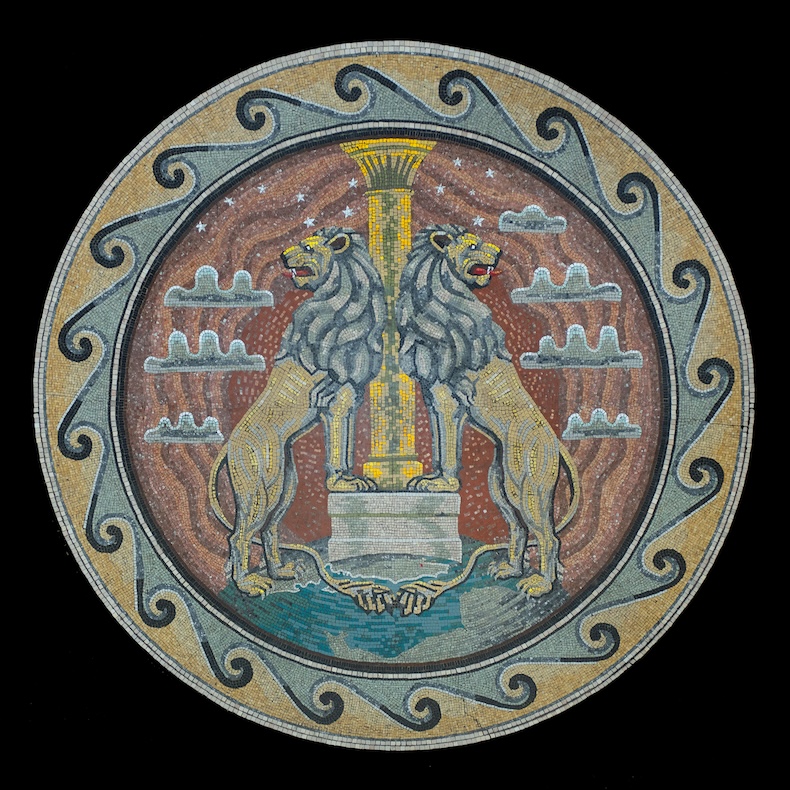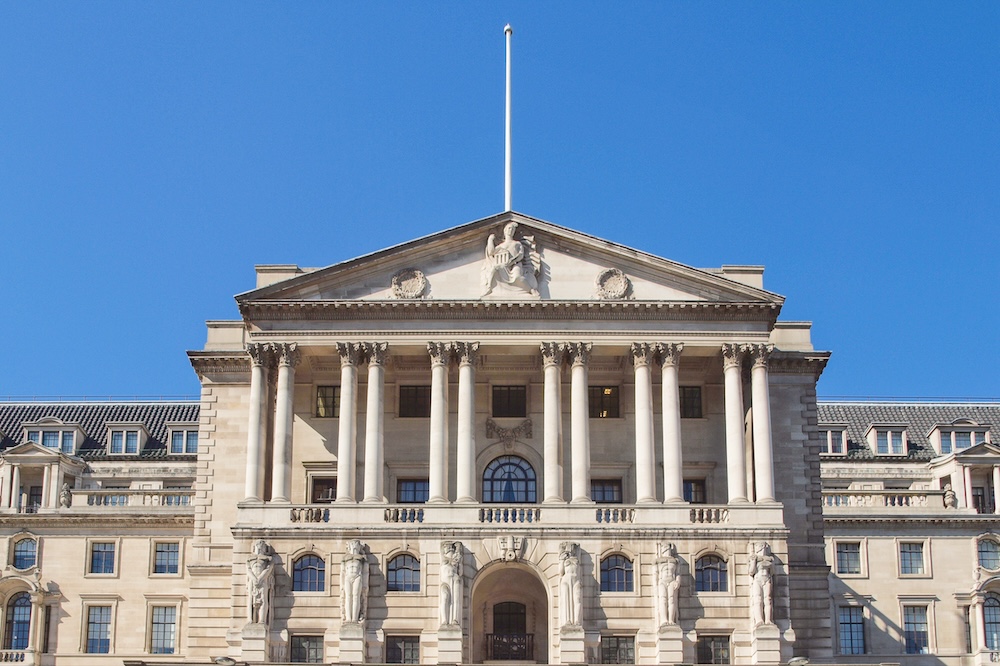If there’s one widely known fact about the buildings of the Bank of England, it’s this: Sir John Soane laid out the original plan for the site on Threadneedle Street in the City of London, steadily piecing together a dream-like masterpiece. And then, a few short decades later, lesser men thoroughly wrecked the place, committing what Nikolaus Pevsner called ‘the greatest architectural crime, in the City of London, of the 20th century’.
It is now one hundred years since this crime, and the Bank is putting the perpetrators up for parole. The centenary of the rebuilding is being marked with an exhibition at the Bank of England Museum, which cheers the art and craftsmanship that went into it, without dwelling on any unpleasantness. They have, if you’ll forgive the expression, put the best possible construction on it. And it has been a century. One wonders how many passers-by today notice the disjunction between the Bank’s sparse, monumental ground floor – where some of Soane’s work persists – and the pompous, overweening superstructure, an extremely different building; or that the statuary on the upper levels is obviously more recent than is implied by the stolid neoclassicism that holds it up.

Soane became the Bank’s architect in 1788 and held the job for 45 years. Over this time, the Bank assembled its three-acre island site and Soane stitched it all together bit by bit, enclosing a remarkable collection of interior halls and courts behind a fortress-like perimeter wall. The consolidated building combined rigorous, almost primitive classicism with Soane’s unique and enigmatic qualities. It was always a patchwork, and far stronger for it. The plan of the building as Soane left it, easily found online, is illustrative of the way architecture can derive life and power from fixes, compromises and even portions of fudge.
Within Soane’s lifetime, the Bank building was acquiring the raiment of myth. In this it was aided by Joseph Michael Gandy’s justly famous painting of Soane’s Bank as a Piranesian ruin. (A reproduction appears in the Bank museum’s permanent display; the original in the Soane museum.) But it was built to house an institution that had completely transformed by the early years of the 20th century. The Bank of England was no longer a public place but a nexus of bureaucracy; it needed offices, not Roman halls. Herbert Baker, a prolific imperial architect who was working with Edwin Lutyens on New Delhi, was chosen for the task.

At once, the verdict on Baker’s work was unsparing, as it has been pretty much ever since. As Gavin Stamp wrote in Interwar: British Architecture 1919–1939, the job ‘damned’ Baker’s reputation (for which reason Stamp is glad Lutyens did not get the commission, despite ‘fervently’ lobbying for it). It played a part in discrediting the overripe, Brobdingnagian neoclassicism of this period in general. Architectural historian Harry Stuart Goodhart-Rendel, quoted by Stamp, called the destruction of Soane’s building an ‘outrage’ and Baker’s additions ‘incongruous and ignorant’. It’s difficult to find a good word said about it; even the Bank’s permanent displays are discreetly apologetic.
All of which makes ‘Building the Bank’, curated by Jennifer Adam, quite refreshing in a contrarian way. The Builders, a sedate group portrait by A.K. Lawrence that opens the exhibition, shows Baker at work, surrounded by his collaborators and the Bank’s officials and overseers. Included are Francis Troup, an Arts & Crafts artist and architect who as Soane’s distant successor at the Bank had chosen Baker; sculptors Charles Wheeler and Joseph Armitage; and structural engineer Oscar Faber. The fact this stiff but elegant canvas exists is proof of the pride with which Bank approached the job. However the imagination leads the viewer to feel a little sorry for Baker, who has quite a crowd breathing down his neck. (He looks a little down in the dumps in Lawrence’s solo portrait as well.) Following Pevsner’s accusation, we might scour Lawrence’s painting for the real murderer. After all, the background contains the body, the remains of the old building in the midst of reconstruction. And in the finest tradition of the murder mystery, the real culprit is hiding in plain sight: the fragment of steel frame seen to the right. It was this massive steel frame that allowed the construction of such a substantial building over the original low-rise Bank, and it was the imperial conceits of the time that slathered this modern structure with discordant neoclassical orders and mansards.

Hidden it may be, but the steel frame was celebrated by ‘the builders’. Wheeler – depicted by Lawrence as a caricature artist, in smock and red bandanna – carved a keystone showing Faber and his steel frame; a picture of this is placed next to some of Soane’s extraordinary conical bricks used to construct the dome of the rotunda, implying a continuity of structural innovation on the site. Wheeler also sculpted the rather stodgy group of modern figures on Baker’s portico; sensibly the exhibition instead highlights his much livelier Ariel, which surmounts the dome of the corner of Princes Street and Lothbury, the original model of which is included.

Boris Anrep’s mosaic floor – here in reproduction, as the original is in the main entrance hall on Threadneedle Street – is similarly animated, almost cheeky, accompanied by Pierre Roy’s unusual and faintly sinister portrait of the artist, turned to stone in a haunted De Chirico gallery. Everywhere one catches hints of creativity and modernity itching to break free, but the overcoat of respectability was too heavy. Stability, security and permanence were the message that had to be conveyed, not delicacy or elan, and there was no Soanean visionary available who could fulfil the brief while bucking the times. One is left wondering who might have been up to it. Louis Kahn, perhaps. A text in the exhibition says the 1925 building ‘would never be created today’. That’s certainly true.
‘Building the Bank – 100 years on’ is at the Bank of England Museum, London.
